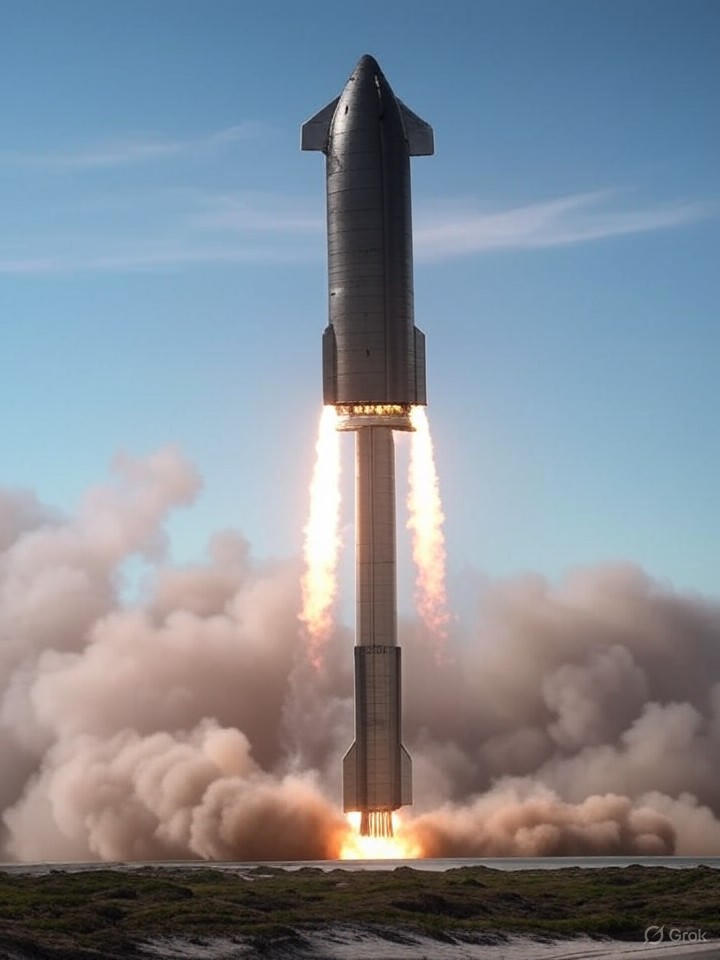BREAKING: SpaceX’s Starship Flight 10 achieved remarkable milestones on August 26, 2025, despite facing significant hardware flaws. The massive rocket launched from the company’s Starbase facility in Texas, showcasing an innovative approach to spacecraft development that prioritizes resilience over perfection.
The flight comes on the heels of recent setbacks, with previous missions ending in catastrophic failures. This time, however, SpaceX successfully gathered essential real-world data, pushing the boundaries of interplanetary travel. The Super Heavy booster executed a controlled splashdown in the Gulf of Mexico, while the Starship upper stage reached orbital velocity, completing a partial orbit before landing in the Indian Ocean.
In a significant breakthrough, the flight marked the first successful deployment of a mock payload utilizing a “Pez dispenser” mechanism, simulating future Starlink satellite releases. This mission emphasizes SpaceX’s focus on iterative resilience, allowing engineers to test the vehicle’s response to failures mid-flight and gather critical data for future improvements.
Elon Musk, SpaceX’s CEO, confirmed on X (formerly Twitter) that the vehicle overcame several issues, including leaks that caused pressure problems, yet still managed to complete crucial phases of the flight. Official posts from SpaceX’s account built anticipation for this pivotal mission, which followed a challenging June test stand anomaly.
Despite earlier failures, Flight 10’s success illustrates a shift in strategy for SpaceX, with industry observers praising the decision to fly imperfect hardware. The National Space Society expressed its congratulations in a press release, highlighting the critical capabilities demonstrated during the mission.
Today’s flight not only validated SpaceX’s “fail forward” philosophy but also tested upgraded forward flaps and higher-thrust engines. The mission, described by Space.com as a “stunning comeback,” showcased the rocket’s ascent, even as some tiles shed during re-entry, emphasizing the importance of resilience for future missions to Mars.
Challenges persisted, including oxygen and fuel leaks that echoed issues from Flight 9, yet the partial success of hovering before a planned ocean descent reinforced SpaceX’s commitment to rapid iteration. Analysts from The New York Times noted that this flight overcame prior delays and issues, rescheduling from August 24 to the 26th.
For industry insiders, Flight 10 represents a significant step forward, potentially accelerating the timeline for crewed missions. The successful payload deployment during the flight could integrate Starship with NASA’s Artemis program and commercial ventures, paving the way for a new era in space exploration.
Looking ahead, SpaceX plans to increase launch frequency, with Musk indicating that data from Flight 10 will refine heat shields and propulsion systems. As the space sector watches closely, the implications of this resilient approach could reshape how rockets are developed and flown in the coming decade.
As SpaceX prepares for Flight 11, the company’s shift from chasing perfection to embracing iterative progress could not only lower costs but also make space more accessible. Flight 10 stands as a testament to SpaceX’s audacious strategy, turning potential disasters into invaluable learning experiences. The ripple effects of this mission may influence competitors and inspire global exploration ambitions for years to come.






































































